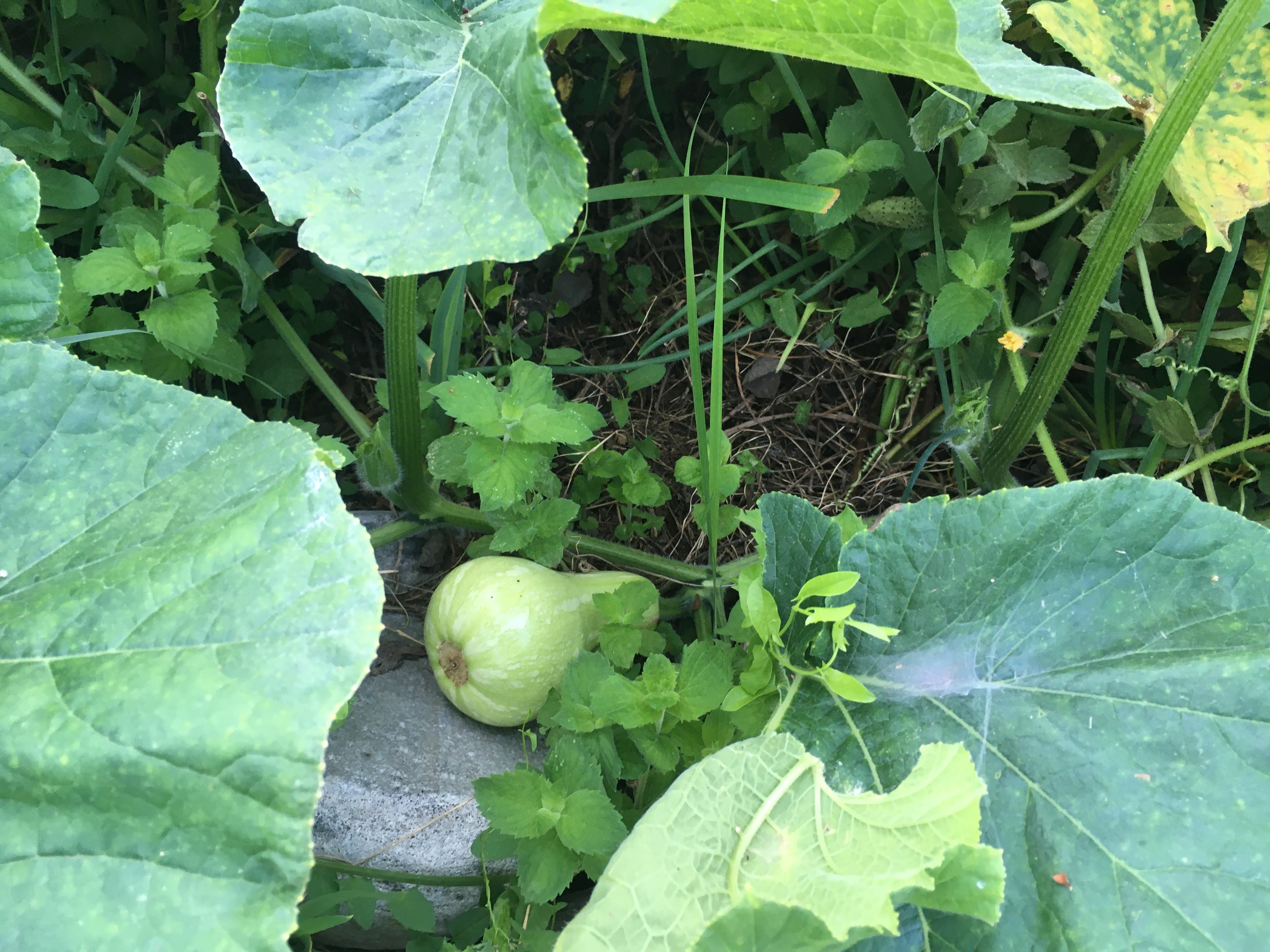Well, it is already September, somehow the August Post never got written but the carrots did not care. They grew and grew.
On August 28th I began the transition to the fall garden. I picked the last of the cucumbers and put in beets, radishes, lettuce, spinach, and turnips seeds. The big news, for this post, of that day’s gardening is that I did some selective thinning of the carrots. That selective thinning’s main goal was the future — bigger and better carrots on Carrot Day, but I did get some nice carrots to use right then.
Over the past three or four years, I have been developing my knowledge of interplanting. It began for me as a way to get more out of each inch of the garden. As different vegetables mature at different rates the bed can be maximized for production. For example, by the time the kale is mature and in need of a great deal of space the radishes and lettuce have had their time and are no longer competing for light, water, and nutrients.
Right now my big interplanting excitement is a single butternut squash plant. Sometime in late June, I put in some seeds on the edge of the garden right at the corner where the flowers, mint, and vegetables coexist.





I did not see the butternut squash for weeks. But a single seed germinated and lived and one day while picking cucumbers I saw the plant. My friend Katherine was there when I first discovered the larger squash leaves among the smaller cucumber leaves. We celebrated the discovery together. We laughed and found glory in that sole squash plant and what it might bring come fall. That sense of sharing and hoping is what Carrot Day is all about. Developing a sense of community and encouraging each other.
Well, the cucumbers are now gone and the squash is taking over the cucumber’s space and the space of the tansy and mint. The butternut squash has grown to twenty feet in one direction and ten in the other. It is growing amongst and over the tansy, asters, zinnias, black-eyed Susans, and mint. It seems to grow almost a foot a day. But not all is well with that butternut squash plant as the first leaves are starting to die off and I fear that disease may be moving fast as well.
Will the plant produce 10 – 12 beautiful butternuts or two of three that exist now and will mature even if the plant dies? I don’t know but I am very curious to find out. I am not that hopeful about the butternuts but also not that worried as I am not dependent on those squash for survival.
In another part of the garden, I am training my Sungold and Black Cherry tomato plants to climb up to our porch. Tropical Storm Ida had other ideas and set the tomatoes back some but I am hopeful about reaching over our porch rail and eating a tomato. Fingers crossed.

Our next post will be written by Laney Siegner, a teacher of farming and carbon sequestration, and she tells me that interplanting is supported by science as a way to maximize the health of the garden and farm and to improve soil, and to sequester more carbon in that soil.
I got started interplanting because I am a competitive gardener. I want the garden to produce more food this year than last year. Things don’t always work out. Sometimes it is too wet, sometimes too dry, or too cold or too hot, sometimes there is disease and insect damage. The only thing we as gardeners can really work and succeed with is our soil. When our soils improve, more carbon is sequestered, and not only will we be doing our part to lessen climate change, eventually the conditions will be right for more food to share from our own labors.
It feels good to try to get the most out of the land and feed friends and family. Here is to a celebration of surplus shared! That is what Carrot Day is about — celebrating the taste of a really good carrot with friends. Let’s try to spread that joy to all of our vegetables one garden and one child at a time.




Hooray for carrots in your garden, all school gardens and all farm fields. Had to buy my very first bunch of carrots today after finally using all the very small and tiny carrots that were the remainder of last year’s amazing harvest here at Holly Hill Farm. They had taken up residence in a refrigerator in the barn and had fed goats, donkey, pony and one giant Persian rabbit all year. Cheers for carrots and all who grow them!!!!
Jean White
LikeLike
Thank you Jean for all that you do to inspire us all.
LikeLike
Thank you Jean for all that you do to inspire so many of us.
LikeLike